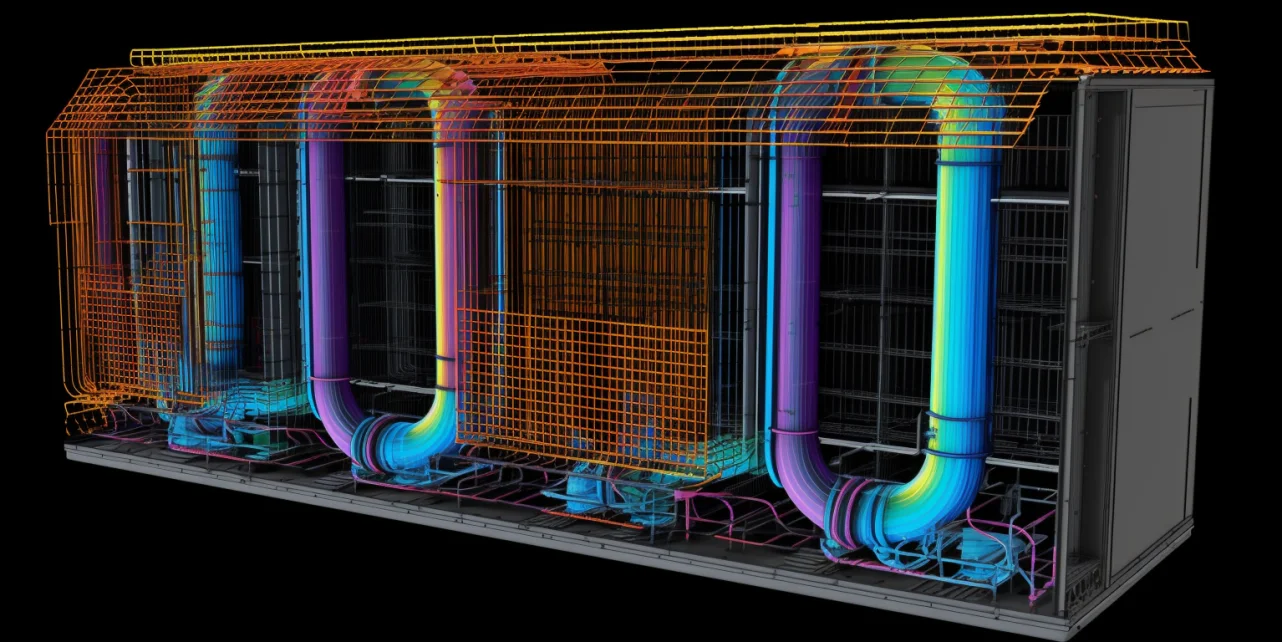Key Takeaways
A heat exchanger software is a highly essential tool for engineers and architects in solving problems related to heat transfer. This software is used to design heating and cooling systems, as well as analyze efficiency and energy.
Using a heat exchanger software, engineers and architects can quickly determine advance techniques in heating and cooling designs while assessing the cost and performance of the system. Heat exchanger software can evaluate the best design, operating conditions, and materials to minimize cost while optimizing performance.
Heat exchanger software can also predict the impact of a system on its environment, and aid in the identification of operational risks. With it, engineers can analyze the fluid flow and temperature differences within the system, monitoring the temperatures of each touch point. It can calculate the heat transfer coefficients, pressure drops, and effects on process performance. Generally, heat exchanger software increases accuracy and efficiency during the design process.
In summary, a heat exchanger software can save time, money, and energy during the engineering design process. It can perform fluid flow and temperature calculations with ease, allowing engineers and architects to better understand their design decisions. By reducing operational risks and increasing accuracy, heat exchanger software enables engineers and architects to make better-informed decisions.
Overview of the Benefits of a Heat Exchanger Software
Heat exchanger software is a highly useful tool for engineers and architects in solving problems related to heat transfer. This software is used to design, analyze, and optimize heating and cooling systems.
Heat exchanger software enables engineers and architects to analyze their designs quickly and accurately. It provides optimization techniques that can reduce the cost of a system, while maximizing its performance. Additionally, this software can predict the impact of a system on its environment, and identify any potential operational risks.
With heat exchanger software, engineers can easily calculate heat transfer coefficients, flow rates, and pressure drops. It can predict temperatures at each touch point within the system, making it easier to monitor and analyze the system’s performance. This software also allows for faster decisions and better-informed design choices.
In conclusion, heat exchanger software offers a wide range of benefits to engineers and architects. From evaluating designs to predicting impacts on its environment, this software can save time, money, and energy during the design process. By increasing accuracy and efficiency, heat exchanger software enables engineers and architects to make more informed decisions.
How the Software Saves Time and Money
Heat exchanger software is an invaluable tool for engineers and architects in solving problems related to heat transfer. With this software, engineers and architects can analyze and optimize designs, reduce operational risks, and increase accuracy during the design process.
Utilizing a heat exchanger software helps engineers and architects save both time and money. First, this software can perform accurate calculations on heat transfer coefficients, flow rates, and pressure drops. This leads to faster design decisions and higher efficiency during the design process.
With the software, engineers and architects can also optimize their designs for cost-effectiveness. It provides optimization techniques that can reduce the cost of a system, while maximizing its performance. Additionally, this software can predict the impacts of a system on its environment. By reducing operational risks, engineers have fewer surprises during the production process and can save costs.
Overall, heat exchanger software can save time and money by enabling engineers and architects to make better-informed decisions. By accurately predicting system components, evaluating the cost-effectiveness of a system, and reducing risks, this software can save time and money during the engineering design process.
Its Role in Analyzing Efficiency and Energy
Heat exchanger software plays a critical role in analyzing efficiency and energy in design and engineering processes. It enables engineers and architects to track and analyze the performance of their heating and cooling systems.
Using this software, engineers can accurately measure and track energy consumption. It can perform calculations on heat transfer coefficients, flow rates, and pressure drops. Through this, engineers can predict temperatures at every touch point of the system, making heat exchange more efficient.
The software also evaluates the cost-effectiveness of a design. By optimizing the design with advanced techniques, it helps engineers and architects reduce unnecessary costs while maximizing its performance. In addition, this software can analyze the impacts of a system on its environment. This helps engineers plan for potential operational risks, and adjust their designs accordingly.
In conclusion, the software is instrumental in analyzing efficiency and energy. With it, engineers and architects can accurately assess the performance and cost of a design, identify operational risks, and optimize their designs for cost-effectiveness. This improves the accuracy and efficiency of the design process, and reduces operational costs.
Evaluating Design Options with Heat Exchanger Software
Heat exchanger software is a highly useful tool for engineers and architects in evaluating design options during the design process. This software can measure and analyze the efficiency of heating and cooling systems, as well as provide optimization techniques for maximizing performance.
The software enables engineers and architects to compare different designs and assess their associated risks. It can perform calculations on fluid flow, heat transfer coefficients, and pressure drops. Additionally, this software can calculate temperature differences between touch points, allowing engineers to monitor system performance. Through this, engineers can accurately and quickly evaluate the effectiveness of different designs.
Furthermore, the software can optimize designs for cost-effectiveness. It provides advanced techniques that can reduce the cost of a system, while maximizing its performance. It also calculates the impact of a system on its environment, allowing engineers to identify potential risks and adjust their designs accordingly.
In summary, the software is a powerful tool for engineers and architects in evaluating design options. It can accurately measure and analyze system performance, provide advanced optimization techniques, and identify operational risks. By increasing accuracy and efficiency, heat exchanger software enables engineers and architects to make better-informed decisions.
Reducing Operational Risks and Increasing Accuracy
Heat exchanger software is a highly beneficial tool for engineers and architects in reducing operational risks and increasing accuracy during the design process.
Using heat exchanger software, engineers can assess the fluid flow and temperature differences of a system. It provides accurate calculations on heat transfer coefficients, flow rates, and pressure drops, as well as information on the system’s impact on its environment. By monitoring the temperatures of each touch point, engineers can identify any potential risks. This helps them make better-informed design decisions.
In addition, the software can optimize designs for cost-effectiveness. It provides advanced techniques that can reduce a system’s cost, while maximizing its performance. This software also helps engineers identify potential issues before they arise, making the design more reliable and efficient.
Overall, the software is instrumental in reducing operational risks and increasing accuracy. It provides accurate calculations on system components, estimates operational risks, and optimizes designs for cost-effectiveness. With this software, engineers and architects can identify potential risks and make better-informed decisions.
Key Takeaways
Heat exchanger software is an invaluable tool for engineers and architects performing heat transfer tasks. It can provide accurate calculations on fluid flow, heat transfer coefficients, and pressure drops, as well as estimates of system impacts and abilities to optimize designs for cost-effectiveness. Additionally, by monitoring the temperature of each touch point, engineers can identify potential risks and make better-informed design decisions. Overall, heat exchanger software can save time and money, while reducing operational risks and increasing accuracy.







